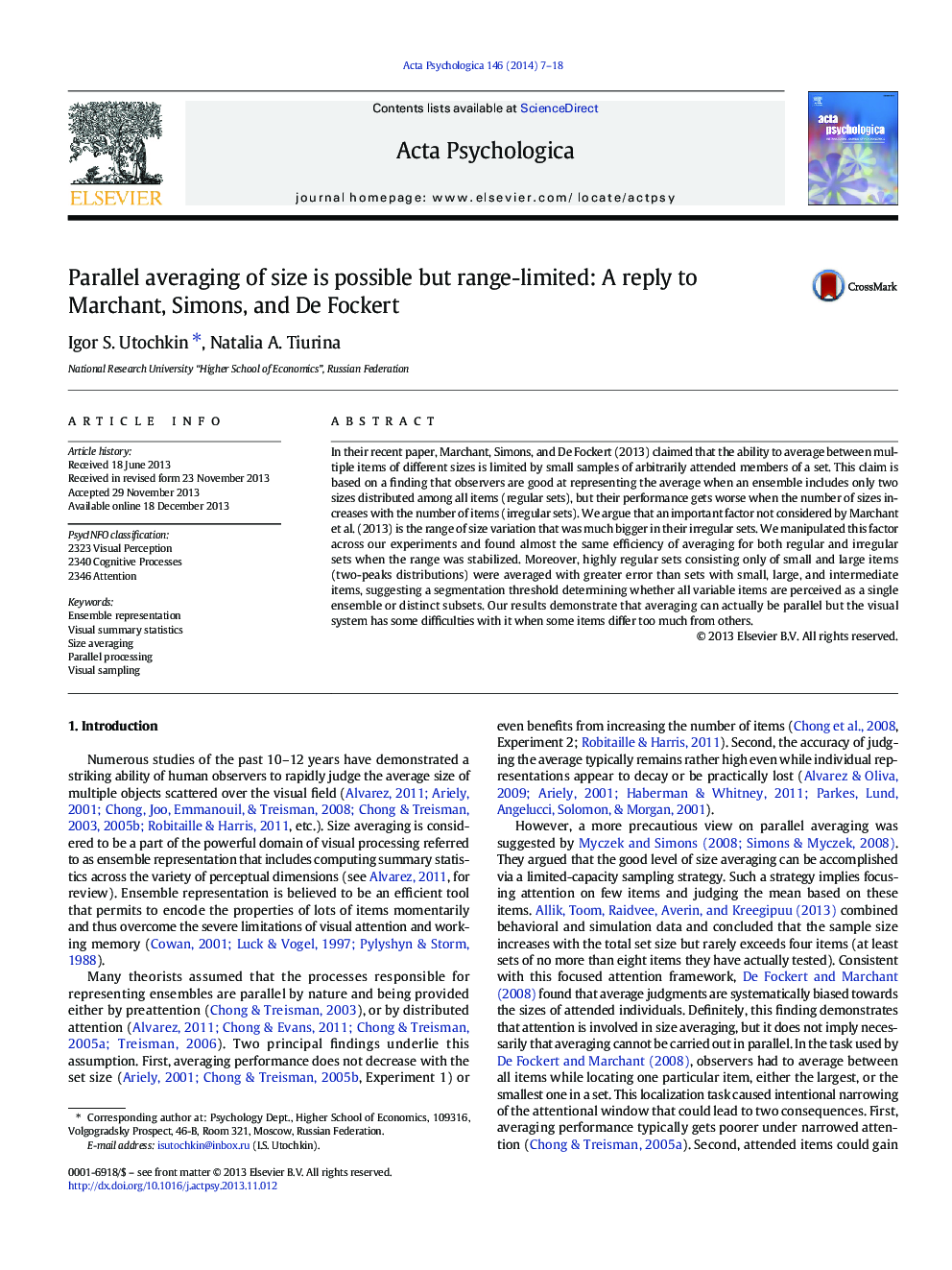| Article ID | Journal | Published Year | Pages | File Type |
|---|---|---|---|---|
| 7277979 | Acta Psychologica | 2014 | 12 Pages |
Abstract
In their recent paper, Marchant, Simons, and De Fockert (2013) claimed that the ability to average between multiple items of different sizes is limited by small samples of arbitrarily attended members of a set. This claim is based on a finding that observers are good at representing the average when an ensemble includes only two sizes distributed among all items (regular sets), but their performance gets worse when the number of sizes increases with the number of items (irregular sets). We argue that an important factor not considered by Marchant et al. (2013) is the range of size variation that was much bigger in their irregular sets. We manipulated this factor across our experiments and found almost the same efficiency of averaging for both regular and irregular sets when the range was stabilized. Moreover, highly regular sets consisting only of small and large items (two-peaks distributions) were averaged with greater error than sets with small, large, and intermediate items, suggesting a segmentation threshold determining whether all variable items are perceived as a single ensemble or distinct subsets. Our results demonstrate that averaging can actually be parallel but the visual system has some difficulties with it when some items differ too much from others.
Keywords
Related Topics
Life Sciences
Neuroscience
Cognitive Neuroscience
Authors
Igor S. Utochkin, Natalia A. Tiurina,
